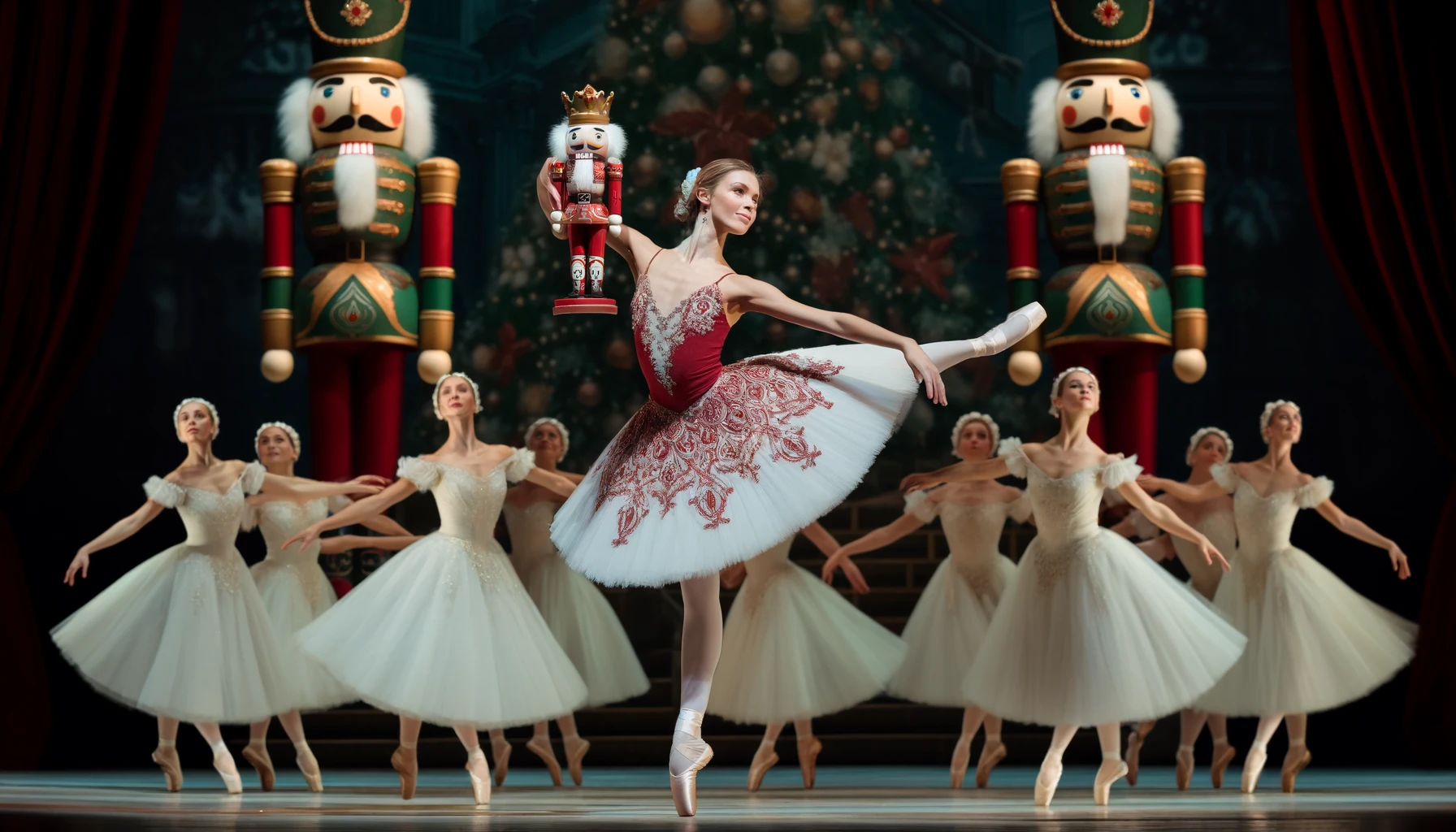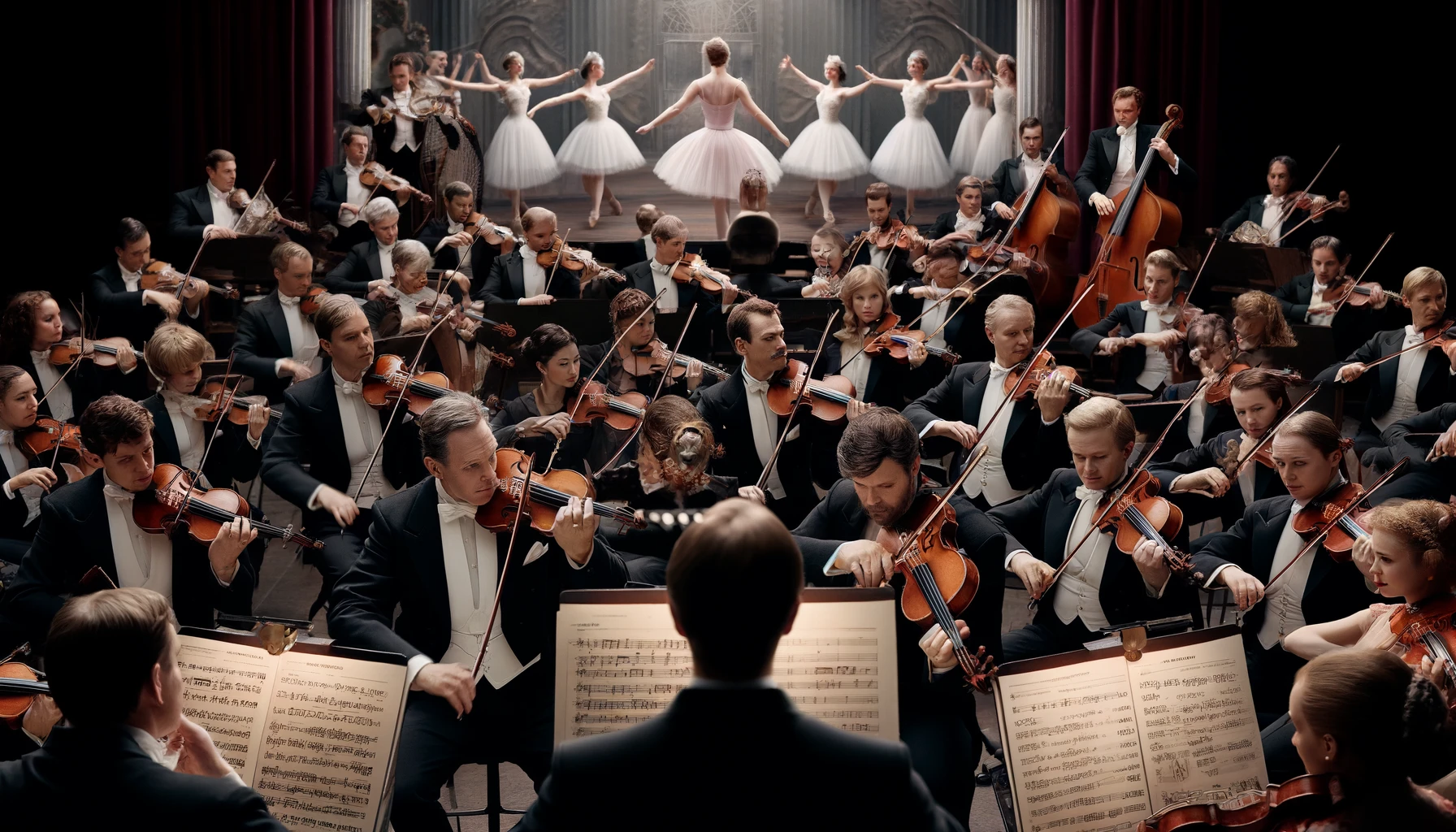Notes to Performers
Objective: These transcriptions allow smaller ensembles to perform Tchaikovsky’s Nutcracker Ballet and Suites, preserving the original timbre and essence within a chamber orchestra format.
About These Works: These works are faithful transcriptions, not arrangements, of Tchaikovsky’s complete original scores. They employ principles from Michael Drapkin’s Restructuring Classical Music project and his book, Extreme Transcription. They adhere closely to the structure and character of the original, scaled to suit a chamber orchestra without altering its intrinsic qualities.
Orchestration: Scored for 26 musicians, these works include:
- Woodwinds: Flute/Piccolo, Oboe/English Horn, Clarinet 1 in A and Bb, Clarinet 2 in A, Bb and Bass Clarinet in Bb, Bassoon
- Brass: Horns 1 & 2 in F, Trumpet in C/Flugelhorn, Tenor/Bass Trombone, Tuba
- Percussion: Percussion, Timpani, Tam-tam, Glockenspiel, Triangle
- Others: Celesta/Keyboard, Chorus (real or keyboard), Harp
- Strings: Four Violin 1, three Violin 2, two Viola, two Celli and Contrabass.
Specific Instrumental Notes: The percussion parts are designed for two players; one mostly on timpani and one playing multiple percussion instruments. The separate Triangle part is to be played by either the Harp or Celeste player while they are idle. The timpanist can play the separate Glockenspiel part. The toy drum and trumpet are played by trumpet and percussion/snare and those parts are built into the trumpet and percussion parts. The trumpet switches to flugelhorn to augment the horns when needed for voicing (horn and flugelhorn are both conical bore instruments). The combined harp part in this transcription is based on the part used by the American Ballet Theater in New York City and edited by New York harpist Grace Paradise, to which thanks are extended.
Balance Challenges and Solutions: Options include increasing the number of string players or electronic amplification to balance the ensemble’s sound against the winds and percussion, or both. It is easy for strings to be overpowered or drowned out. With too few strings, the resulting sound may be too individualistic instead of a full string section timbre. There are three practical solutions:
- Increase the number of string players: Adjust string numbers to enhance the ensemble sound and balance without overwhelming cost implications.
- Volume Control: The conductor manages the winds and percussion to prevent overpowering the strings. This might be a challenge or even impossible given a 1:1 ratio of strings to winds/percussion, although it might make for more impactful tutti/fortissimo sections.
- Amplification: Consider amplification for balance in live performances, especially in acoustically challenging venues or limited orchestra and pit sizes.
Voices for No. 9 Waltz of the Snowflakes: In the absence of a live chorus, this part may be simulated by an amplified electronic keyboard with a voice patch.
Score References: The primary score used was the first edition reprint – Moscow: R. Jurgenson, n.d.[1892], Plate 17688, reprinted – New York Broude Brothers, 1951. Plate B.B. 47.


